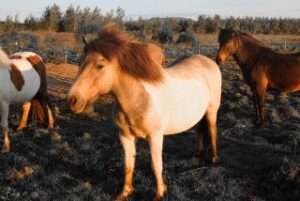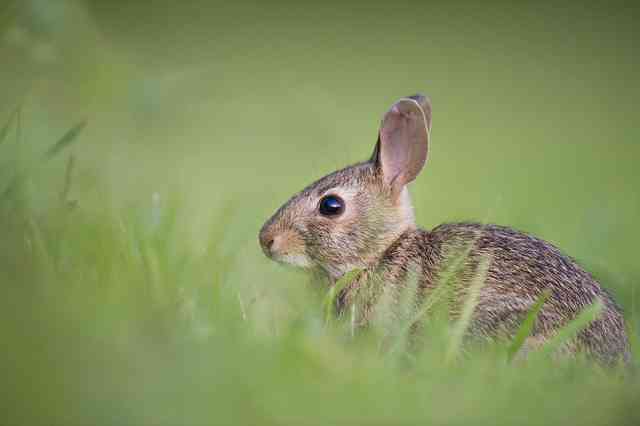Do Mules Bray? (+ How To Stop Them)
Mules are hybrids and offspring of a female horse and a male donkey. This means that they’re expected to have traits from both parents – donkey and horse. In terms of sound, it’s not exactly clear what sound they make.
We may get an idea by looking at the sound of a horse and a donkey. Donkeys bray while horses neigh or whinny. Since a mule originates from both animals, is it possible that the sound it makes is a combination of these? So, do mules bray?
A mule brays but it is unique compared to that of a donkey. It is louder and jarring and sounds like a combination of a whinny and a hee-haw.
As we go further, you will get to learn more about mules and the sounds they make. You will also get to learn why they make these sounds and how to stop them from vocalizing all the time.

What Sound Do Mules Make?
There is usually confusion as to what sound a mule makes. Some say it brays like a donkey, others say it whinnies like a horse. So which one is accurate?
Mules have a unique bray. Not all species of mules sound the same. Most of them have a unique tone that sounds like a donkey’s bray and a horse’s whinny combined. It usually starts with a whinny and ends in a hee-haw.
Mules may also whimper when they feel excited or worried.
As earlier indicated, a mule is an offspring of a male donkey (Equus asinus) and a female horse (Equus caballus), so it’s no wonder that it sounds like both animals.
In essence, we can say mules are able to make three sounds – they can bray, whinny or whimper.
Why Do Mules Bray?
Understanding why animal vocalization is essential in knowing how to handle them. Mules don’t just bray to communicate, but for a good number of other reasons. Let’s look at these briefly.
To communicate
One of the major reasons mules bray is to communicate with each other. Mules have a great hearing ability. They can hear each other from hundreds of yards away. So, when you see a mule braying often, it’s probably trying to tell another mule something.
To show they are hungry
Just like babies, a braying mule could be telling you it’s hungry. This may happen when there’s a little variation in their feeding schedule. Also, if you feed them food they don’t like or are not used to, they can also bray to express displeasure.
Warning against danger
Mules are very intelligent creatures. When they sense an imminent threat or danger, they might bray to send a warning to the people around the area. They also bray when they see a predator; they do this to call the attention of their owner to come to their rescue.
To show discomfort
Mules bray consistently when they feel ill, are in distress, or feel uncomfortable. It is important that you don’t ignore when the mule is persistent but try to find out what’s wrong.
To indicate stress
When mules feel stressed, they vocalize. Say, the mule has an injury or is being disturbed by pests, it will vocalize to show it’s going through stress.
To show affection
A mule can also bray as a sign of affection. This is usually the case when it has a loving owner. Likewise, it will bray if it feels lonely or abandoned.
In general, any situation that gets the mules excited can cause it to bray. This can be when it’s being fed or a simple thing like good weather.
Do Mules Bray Like a Donkey?
Even though mules have a loud bray like that of a donkey, it does not sound the same. The bray of a mule is quite unique and only peculiar to mules.
However, mules have a lot of other things in common with donkeys. Some of these are long ears, slender legs, a tufted tail, small hooves, and a loud bray.
Compared to horses, mules are smaller though not as strong. But they are more docile and intelligent and consume less food than horses of the same size. They also have thicker skin that can withstand extreme temperatures.
It is also worth mentioning that mules do not neigh like horses.
How To Stop A Mule From Braying
Before you can stop a mule from braying, you have to understand what is making it bray in the first place. When you identify the problem, you can take it away and reduce the times it brays.
Mules typically bray when they see a predator. These can be mountain lions, bobcats, or coyotes. In other words, if you can keep predators away, you can stop the mules from braying too much. One way to do this is to install motion sensor lights in your yard or farm.
But even with this, it’s not possible to completely stop a mule from braying. This is because, besides the sight of predators, other conditions such as hunger and feeling of discomfort or stress will also cause them to bray. However, you can reduce this to a minimum by feeding them on time and ensuring they are adequately cared for.
Summary
To bring this discussion to a close, we have established that mules are hybrids with a parent horse and a parent donkey. So, expectedly, they have some traits similar to a horse and a donkey. In most cases, these traits are the sum total of the treats from both parents. This is easily seen in the type of sound they produce.
So, a mule’s bray sounds like a combo of a horse’s whinny and a donkey’s hee-haw.
There are different reasons mules bray. It could be to communicate, show emotion, express hunger or discomfort, etc. Fortunately, there are several ways to stop a mule from braying.





